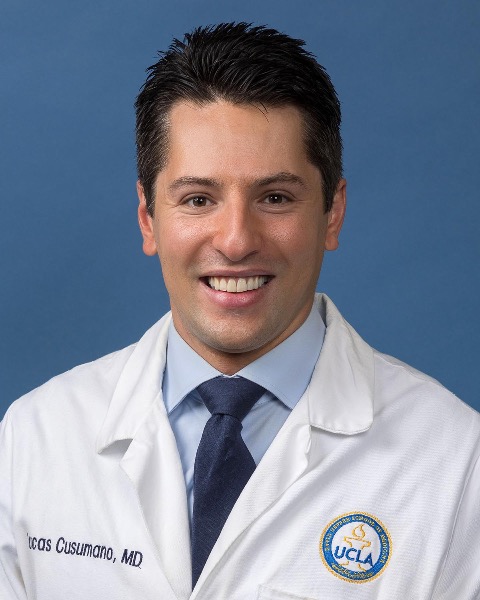SIR 2025
Transplant Interventions
Scientific Session
Splenic Artery Embolization Improves Hepatic Artery Buffer Response in Patients with Non-occlusive Hepatic Artery Hypoperfusion Syndrome After Liver Transplantation

Jonas Kruse, MD
Resident Physician
UCLA, United States.jpg)
Dustin Roberts, MD
Fellow
UCLA Health, United States- AR
Arjun B. Ranade, MD
Interventional Radiology Fellow
UCLA David Geffen School of Medicine, United States - FK
Fady M. Kaldas, MD
Kelly Lee Tarantello Chair in Liver Transplantation
UCLA David Geffen School of Medicine, United States - EL
Edward W. Lee, MD
Associate Professor
University of California, Los Angeles, United States 
Lucas R. Cusumano, MD, MPH
resident
ucla, United States
Presenting Author(s)
Author/Co-author(s)
Splenic artery steal syndrome, also known as non-occlusive hepatic artery hypoperfusion syndrome (NOHAHS), is a known complication following liver transplantation characterized by altered blood flow dynamics leading to insufficient hepatic arterial perfusion and graft dysfunction. This study investigates the effects of splenic artery embolization (SAE) on the hepatic artery buffer response (HABR) in patients with NOHAHS.
Materials and Methods:
A single-center retrospective analysis was conducted in patients with NOHAHS who underwent SAE. Data on patient demographics, embolization technique, and periprocedural outcomes were collected. Duplex liver ultrasound and CT angiography studies were compared before and after intervention to determine the effects of SAE on hepatic artery and portal vein hemodynamics. Flow volumes were estimated from spectral doppler data using the equation: flow = time-averaged velocity x cross-sectional area.
Results:
Among 12 patients with NOHAHS (mean age 51 years, 42% female), the median time from liver transplant to SAE was 35 days (range 3–2,174). Allograft-to-patient weight ratio was 1.32 ± 0.43%. Splenic-to-hepatic artery diameter ratio was 2.88 ± 0.96. On average, hepatic artery peak systolic and end-diastolic velocities both increased following SAE, accompanied by a decrease in hepatic artery resistive index, from 0.78 to 0.72 (P=0.022). Mean arterial flow (mL/min) increased from 103.8 pre-SAE to 162.4 post-SAE (P=0.005), while mean portal venous flow (mL/min) decreased from 1,689.2 to 1,021.6, respectively (P=0.004); the latter driven by decreased splenic vein inflow (mean splenic vein diameter [mm] pre- and post-SAE: 14.0 vs. 9.6, P=0.009). Together, this resulted in significantly improved HABR (HA:PV flow ratio), from 8.7% pre-SAE to 19.0% post-SAE (P=0.005). Total bilirubin levels decreased from 4.9 ± 6.1 mg/dL at baseline to 2.2 ± 3.2 mg/dL at 1 month (P=0.019) and 0.7 ± 0.6 mg/dL at 3 months (P=0.007), with a corresponding decrease in MELD-3.0 score from 19.8 at baseline to 15.5 and 11.2 at 1 and 3 months, respectively (P < 0.001).
Conclusion: Splenic artery embolization enhances the hepatic artery buffer response in patients with NOHAHS. This improvement is likely accomplished by reducing portal hyperperfusion via decreased splenic vein inflow, which, in turn, increases the buffer capacity and hepatic arterial perfusion.


.jpg)